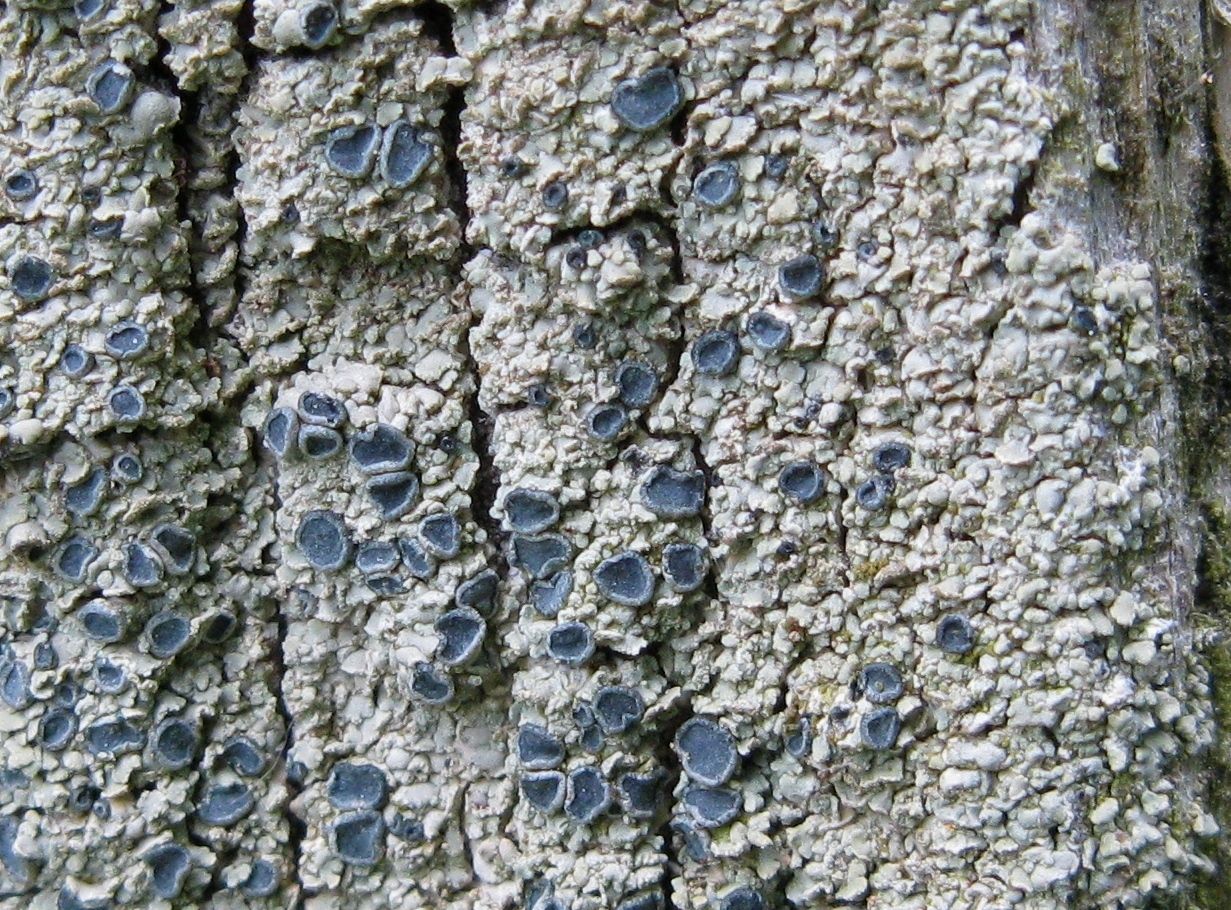
Consortium of Lichen Herbaria
- building a Global Consortium of Bryophytes and Lichens as keystones of cryptobiotic communities -
- Home
- Search
- Images
- Species Checklists
- US States: O-Z >
- US National Parks
- Central America
- South America
- US National Parks
- Southern Subpolar Region
|
Family: Ophioparmaceae |
Nash, T.H., Ryan, B.D., Gries, C., Bungartz, F., (eds.) 2002. Lichen Flora of the Greater Sonoran Desert Region. Vol 1. Life Habit: lichenized, not lichenicolous Thallus: crustose or squamulose, attached by the whole lower surface or basal end of squamule areoles/squamules: dispersed or adjacent or imbricate, up to 2 mm wide, rounded, lobed or with incised margins, soralia present or absent upper surface: grayish green to dark brown, dull or shiny, smooth, not pruinose upper cortex: varying from 10 to 130 µm thick, containing remnants of algae (chlor-zinc-iodine!), consisting of an upper epinecral layer and a lower stainable layer, the latter composed of irregularly to anticlinally oriented hyphae and in most species containing secondary metabolites medulla: white, of intricately interwoven hyphae, I-; algal layer: 40-100 µm thick, horizontally continuous photobiont: primary one a chlorococcoid alga, secondary photobiont absent; algal cells: 10-15 µm in diam. lower cortex: absent or poorly developed lower surface: white to pale brown Ascomata: apothecial, laminal, marginal, or attached to the lower side of upturned squamules, sessile, with a constricted base, persistently flattened and marginate or becoming convex and immarginate, up to 1 (-2.5) mm in diam.; disc: brown or black, sometimes with bluish white pruina, sometimes gyrose; exciple: colorless to brown in the inner part, brown or green in the rim, sometimes containing crystals of secondary metabolites; hypothecium: hyaline to dark brown, lacking crystals; epithecium: green, light brown, or brownish black; hymenium: hyaline, I+ blue, 40-70 µm high; paraphyses: simple or sparingly branched, weakly conglutinated, apical cell swollen or not, with or without pigment cap asci: clavate to rhombic, thin-walled, with a poorly to well developed amyloid tholus containing either a deeper amyloid tube, a deeper amyloid flank, a small non-amyloid axial body, or no visible internal structures, 8-spored ascospores: colorless, simple or 1 (-3)-septate, ellipsoid to fusiform Conidiomata: pycnidial, sessile, globose to ovate, black, wall brown or dirty green conidia: formed acrogenously or pleurogenously, subglobose, ellipsoid, bacilliform, or filiform Secondary metabolites: depsides, depsidones, or benzyl esters in medulla, upper cortex and rarely in exciple and epithecium Geography: temperate regions of the world, especially in boreal conifer forests Substrate: bark and wood, mainly of conifers, many species mainly on charred substrates. Notes: The genus may be heterogeneous. Timdal (1984b) placed the species in four species groups, based mainly on differences in ascus type, exciple, conidia, and secondary chemistry. In some species, e.g. the type species, mature asci are unknown, and the position of the genus within the Lecanorales is still unsettled. |
Powered by Symbiota









